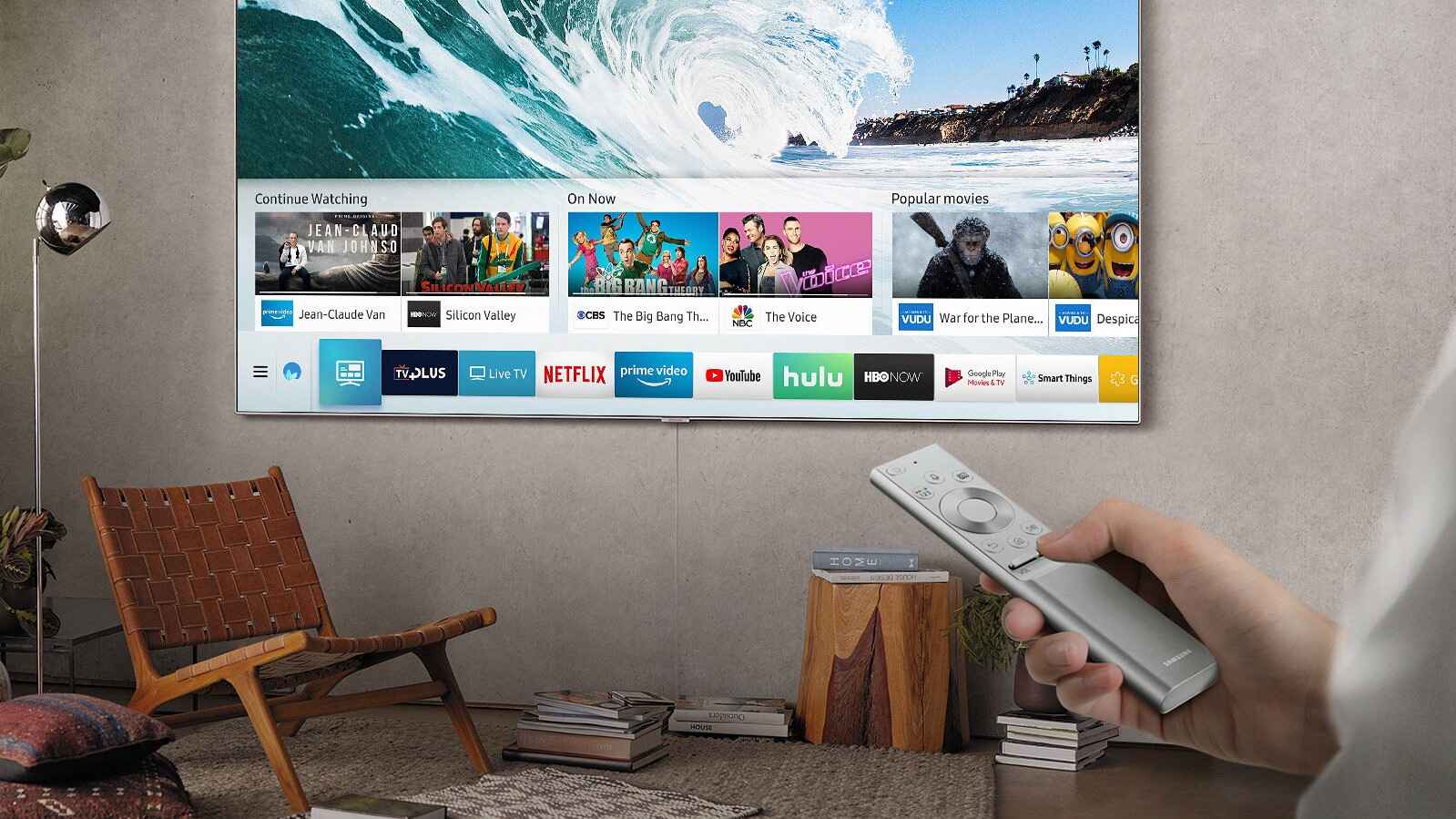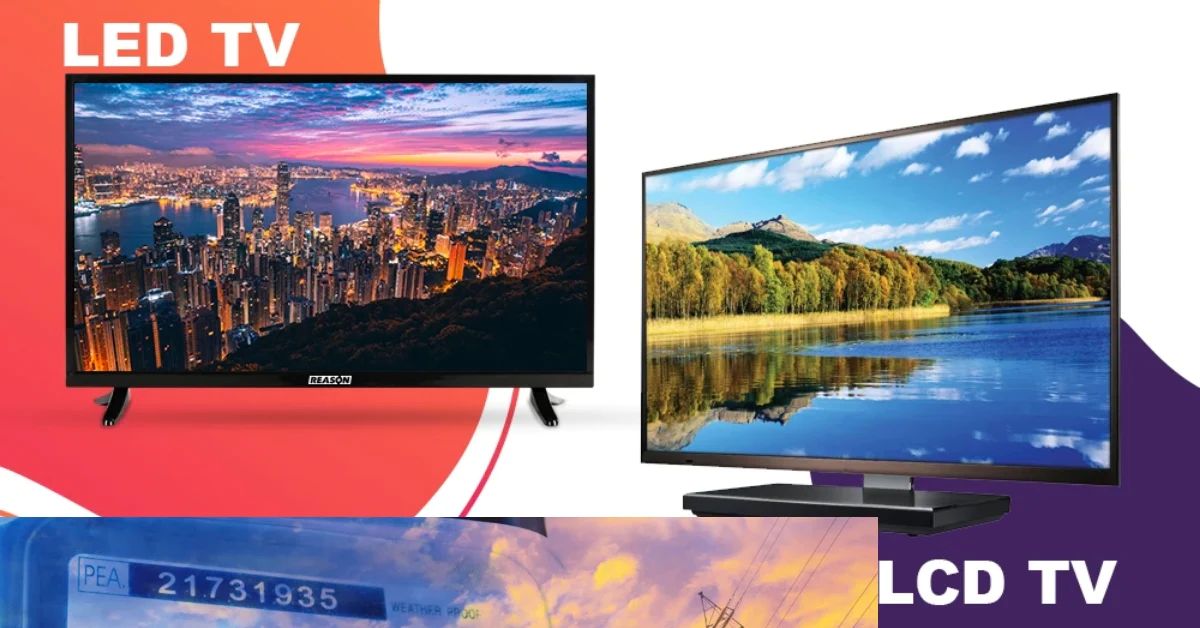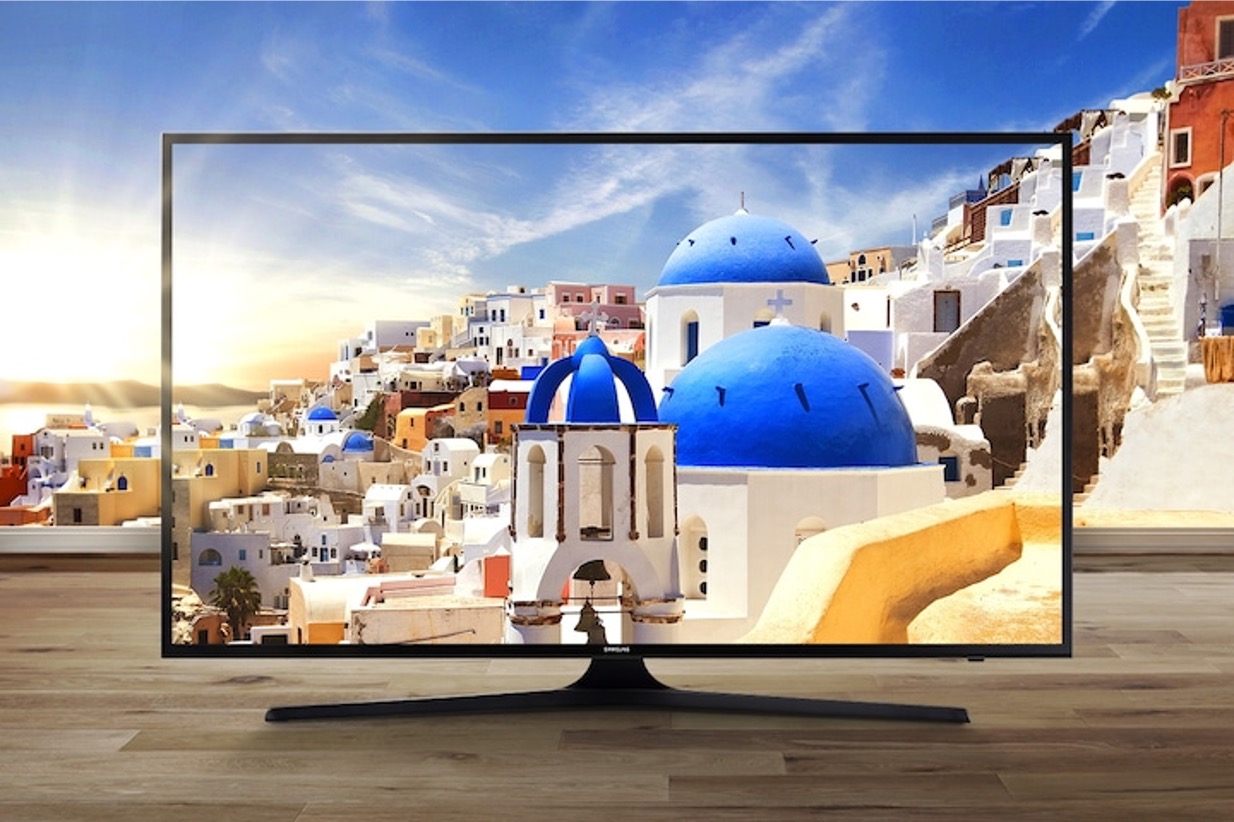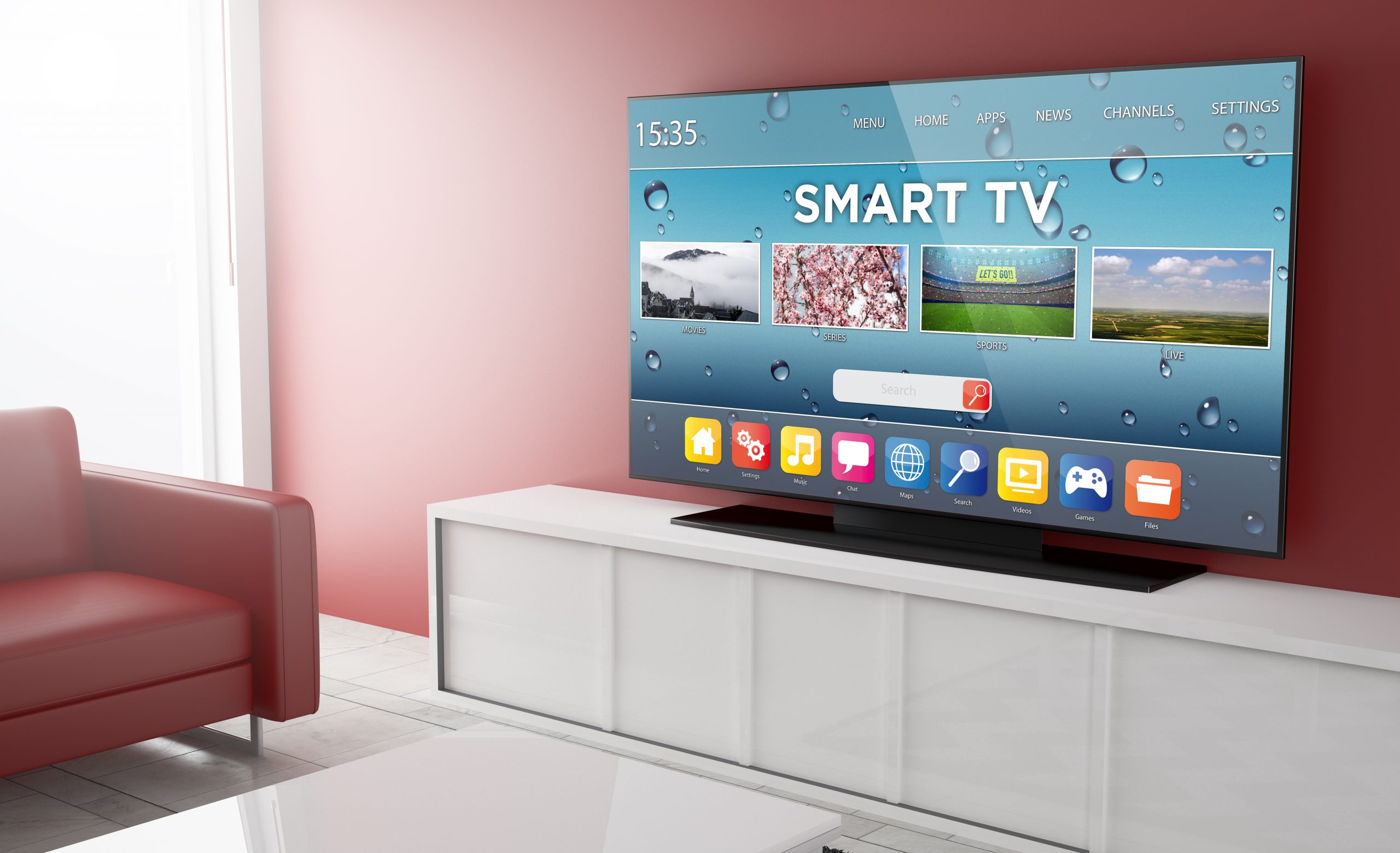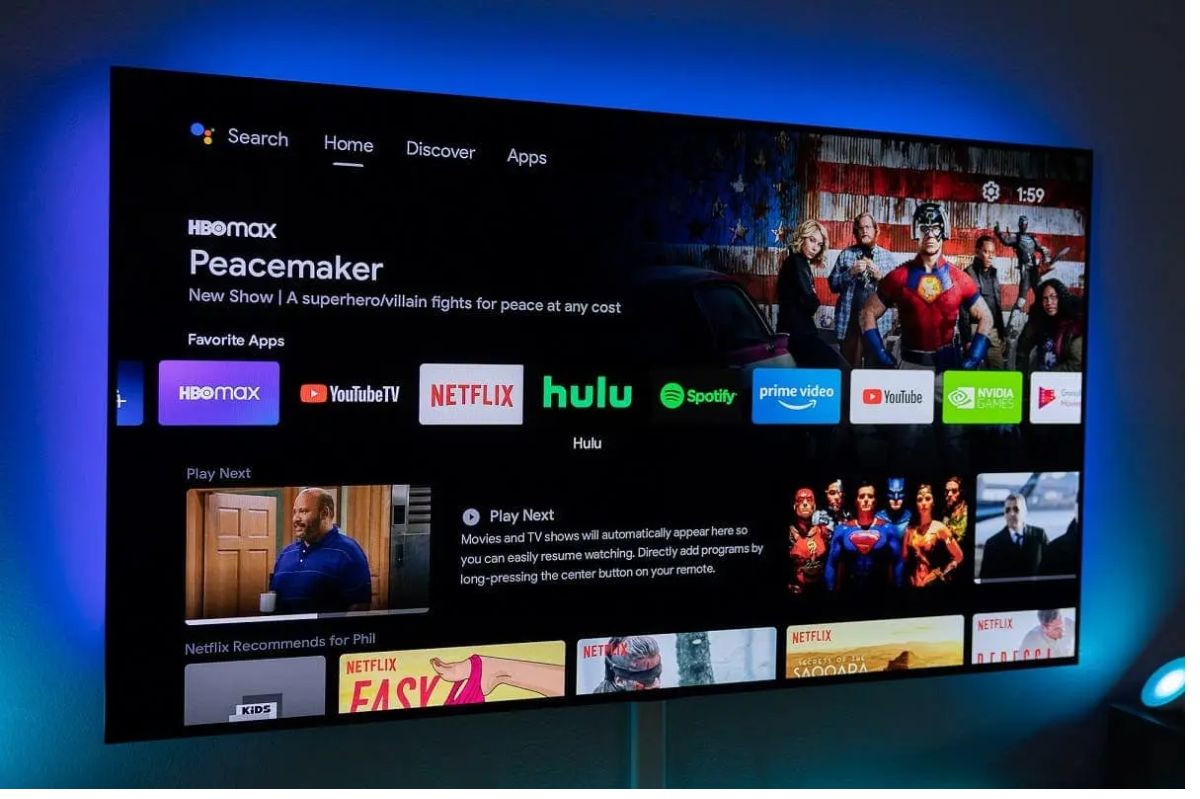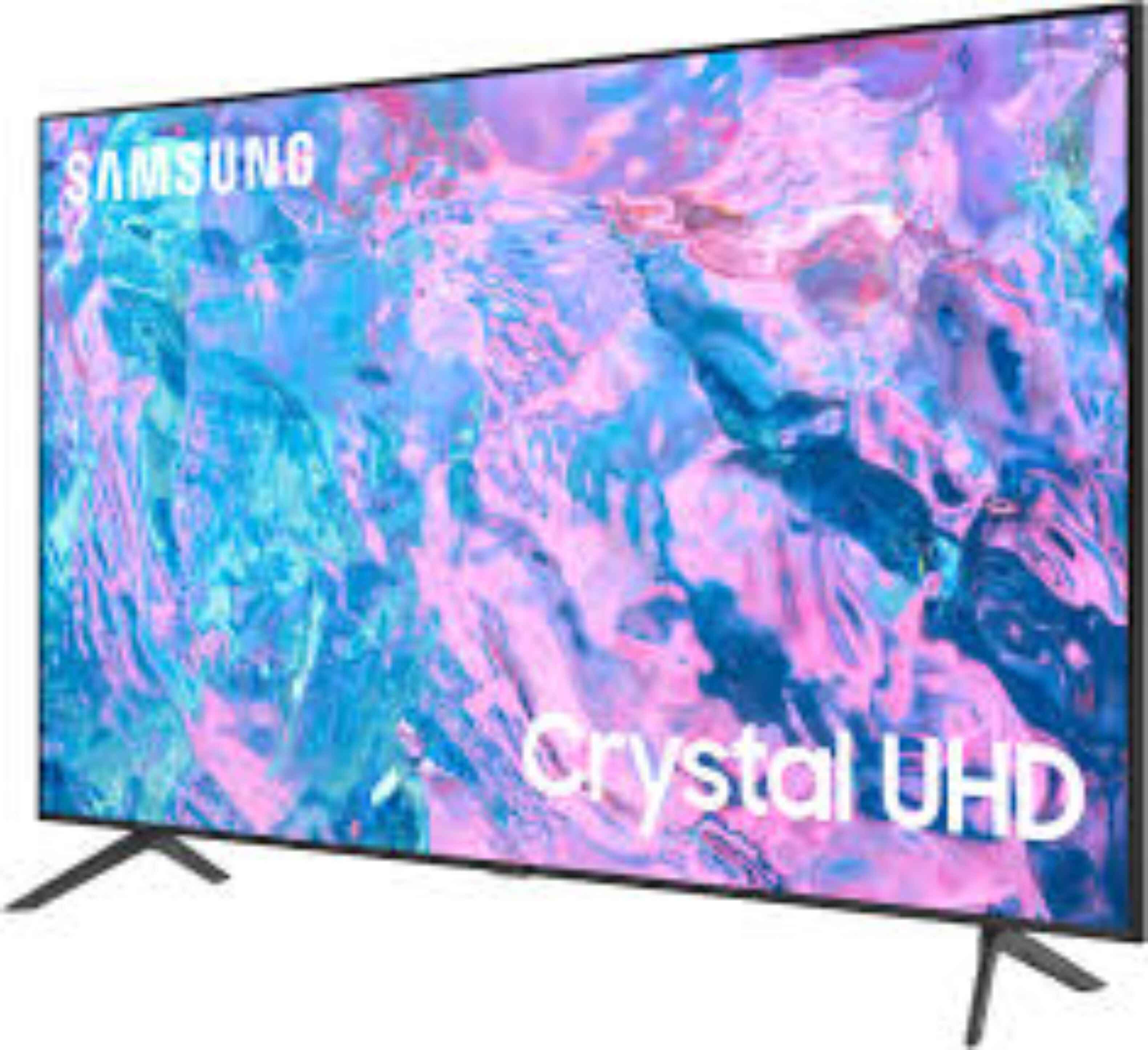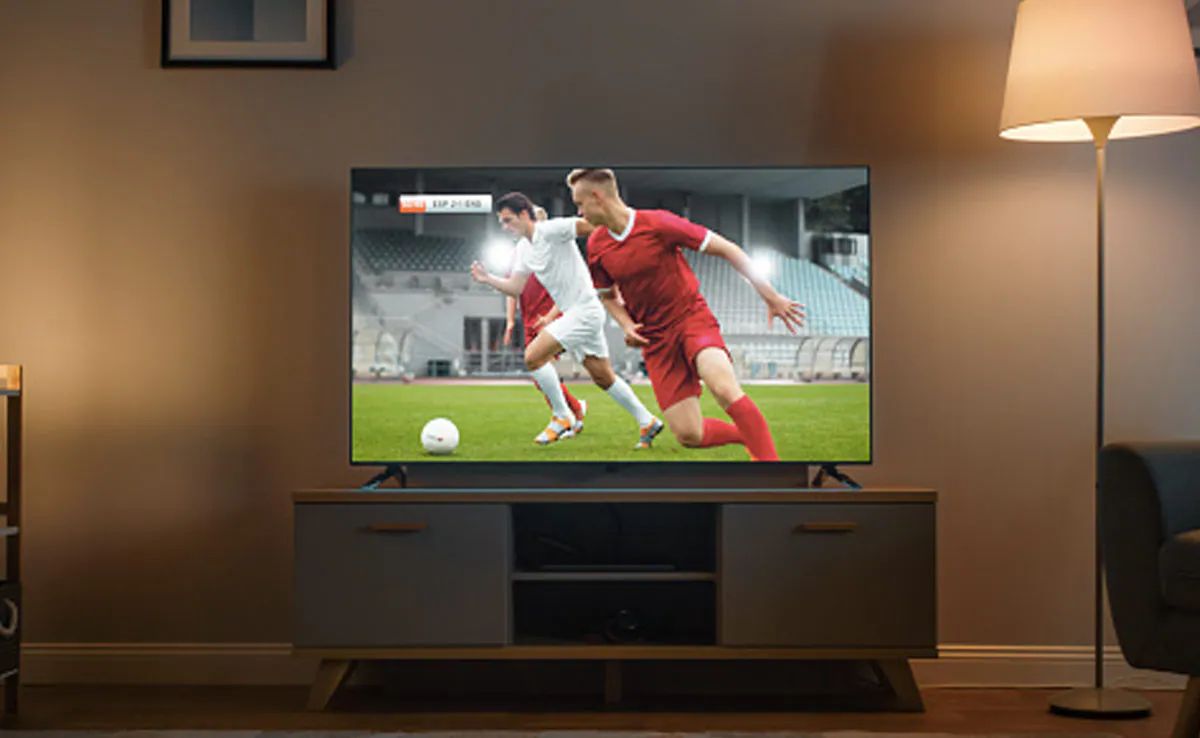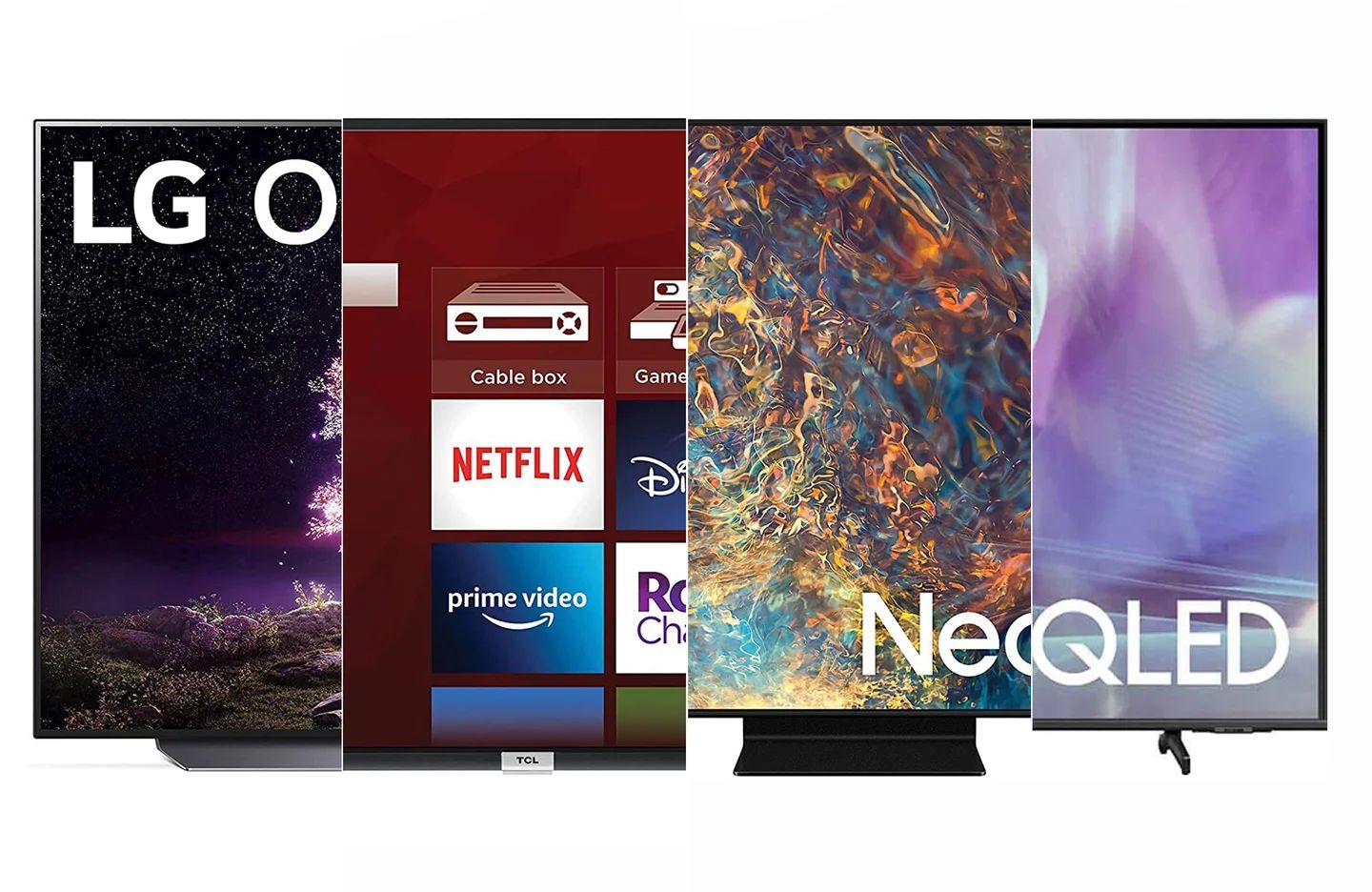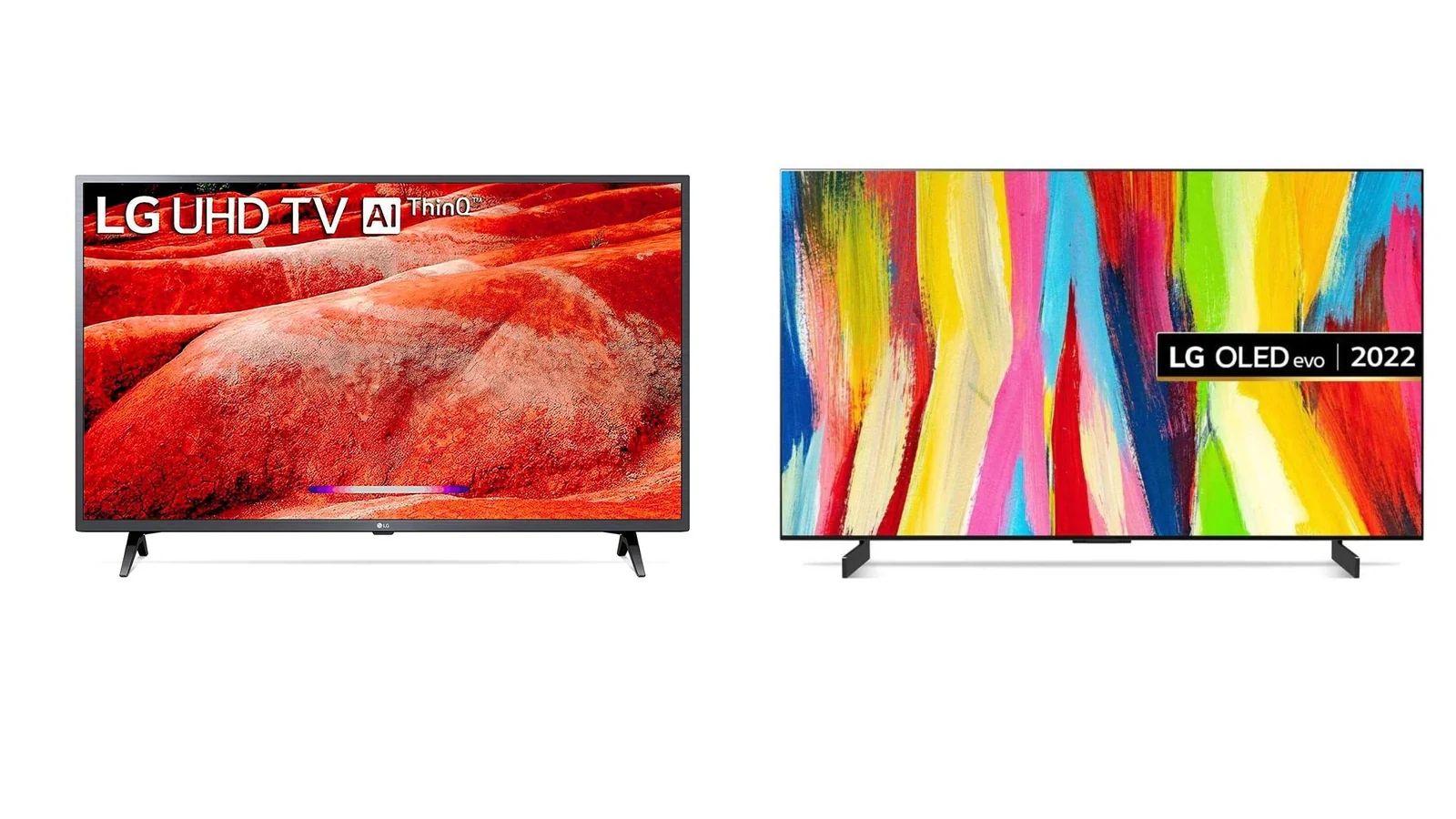Introduction
Welcome to the era of smart technology, where our everyday appliances are getting smarter and more connected. One such innovation that has revolutionized the way we consume media is the Smart TV. With their ability to access the internet and stream content directly, Smart TVs have become a popular choice for entertainment enthusiasts.
But what if you already own an LED TV and don’t want to invest in a brand new Smart TV? Don’t worry, you can easily transform your LED TV into a Smart TV with just a few simple steps. In this article, we will guide you through the process of making your LED TV “smart” and explore the numerous benefits it brings.
A Smart TV is essentially a television that is capable of connecting to the internet and accessing a multitude of online content, including streaming services, social media platforms, and web browsing. Unlike traditional TVs, Smart TVs offer a wide range of features and functionalities, bringing an immersive and interactive viewing experience to your living room.
<
What is a Smart TV?
A Smart TV is a television that is equipped with built-in internet connectivity and advanced software capabilities, allowing users to access a variety of online content and services directly on their TV screen. It combines the features of a traditional television set with the convenience and functionality of the internet.
Unlike conventional TVs, which rely solely on an external antenna or cable box for content, Smart TVs have an integrated operating system that enables them to connect to the internet via Wi-Fi or ethernet. Once connected, users can browse the web, stream their favorite movies and TV shows from popular platforms like Netflix, Hulu, and Amazon Prime Video, listen to music, play games, and even interact with their social media accounts, all from the comfort of their couch.
Smart TVs are equipped with various smart features, such as built-in web browsers, app stores, and voice control capabilities. This allows users to navigate through the TV’s interface, install and use applications specifically designed for Smart TVs, and control their TV using voice commands.
In addition to online content, Smart TVs also offer the ability to connect external devices, such as gaming consoles, Blu-ray players, and sound systems, providing a seamless and integrated entertainment center for your home.
It’s important to note that different manufacturers may use different operating systems for their Smart TVs, such as LG’s webOS, Samsung’s Tizen, or Android TV. These operating systems come with their own unique interfaces and app ecosystems, but the core functionality of a Smart TV remains the same – the ability to access and enjoy a vast array of online content.
Smart TVs have become increasingly popular in recent years due to the convenience and versatility they offer. They eliminate the need for additional devices, such as streaming boxes or media players, and provide a centralized hub for all your entertainment needs. Whether you are a movie enthusiast, a gaming enthusiast, or simply someone who wants to stay connected, a Smart TV is a great addition to any living room.
Benefits of Turning Your LED TV into a Smart TV
Transforming your LED TV into a Smart TV comes with a plethora of benefits that enhance your overall viewing experience. Here are a few advantages of making the switch:
- Access to Streaming Services: One of the biggest advantages of a Smart TV is the ability to access popular streaming services like Netflix, Hulu, and Amazon Prime Video directly from your TV. Say goodbye to the hassle of connecting external devices. With a Smart TV, you can easily stream your favorite movies and TV shows with just a few clicks.
- Expanded Content Library: Smart TVs offer a vast content library beyond just streaming services. You can explore various apps and platforms to access news updates, educational content, music streaming services, and even play games. The possibilities are endless.
- Web Browsing: Want to quickly look up something on the internet without reaching for your smartphone or computer? Smart TVs come with built-in web browsers, allowing you to comfortably browse the web directly on your TV screen. It’s convenient for checking out recipes, reading articles, or even shopping online.
- Convenient App Installation: Smart TVs have their own app stores where you can easily download and install applications tailored for TV viewing. Whether you’re interested in news apps, weather updates, or social media platforms, you can customize your Smart TV with the apps that suit your interests.
- Seamless Integration with Other Devices: Turning your LED TV into a Smart TV enables it to seamlessly integrate with other smart devices in your home. You can connect your smart speakers, security cameras, and smart home hubs to enjoy a more connected and synchronized living space.
- Voice Control Capabilities: Many Smart TVs come with voice control capabilities, allowing you to control your TV with simple voice commands. This hands-free navigation makes it convenient to search for content, change channels, adjust volume, and even control compatible smart home devices.
- Updates and New Features: Smart TVs often receive software updates that bring new features and improvements. By converting your LED TV into a Smart TV, you can take advantage of these updates and keep your TV up-to-date with the latest features and functionalities.
Transforming your LED TV into a Smart TV opens up a world of entertainment possibilities and offers a convenient and integrated multimedia experience. With easy access to streaming services, a wider content library, and the ability to customize your TV with apps, you can enjoy endless hours of entertainment right from your couch.
How to Connect Your LED TV to the Internet
Connecting your LED TV to the internet is the first step in transforming it into a Smart TV. Here are the steps to get your TV connected:
- Check for Wi-Fi Capability: Determine if your LED TV has built-in Wi-Fi capability or if you need to use an ethernet cable for a wired connection. Most modern LED TVs come with Wi-Fi built-in, but older models may require a wired connection.
- Locate Wi-Fi Settings: Access your TV’s settings menu and navigate to the network or Wi-Fi settings. This menu may vary depending on the brand and model of your TV. Look for an option to set up a wireless or wired connection.
- Select Network: In the network settings, your TV will scan for available Wi-Fi networks. Select your home network from the list. If using a wired connection, connect one end of the ethernet cable to your TV and the other end to your router or modem.
- Enter Wi-Fi Password: If you are connecting to a Wi-Fi network, you will be prompted to enter the network password. Use the remote control or on-screen keyboard to enter the password. Once entered, select “Connect” to establish the connection.
- Confirm Connection: After entering the password, your TV will attempt to establish a connection to the internet. Once connected, you will see a confirmation message or an indicator symbol on your TV screen indicating a successful connection.
- Test the Connection: To ensure the connection is working properly, open a web browser or access an app that requires internet connectivity. If the page loads or the app functions correctly, your TV is connected to the internet.
- Update Software: It’s always a good idea to check for software updates for your TV. Updates may include bug fixes, security enhancements, and performance improvements. Check the settings menu for an option to update the software, and follow the on-screen instructions if any updates are available.
Connecting your LED TV to the internet is a crucial step in transforming it into a Smart TV. It enables you to access online content and services, stream your favorite shows and movies, and explore the multitude of smart features that make your TV more than just a traditional television.
Using Smart TV Streaming Devices
If your LED TV doesn’t have built-in smart capabilities or you want to enhance your smart TV experience, you can use external streaming devices. These devices plug into your TV’s HDMI port and provide access to a wide range of streaming services and apps. Here’s a look at some popular streaming devices:
- Roku: Roku devices are known for their wide range of channels and user-friendly interface. Simply connect the Roku device to your TV, set it up, and start streaming your favorite content using the provided remote or Roku mobile app.
- Amazon Fire TV Stick: The Amazon Fire TV Stick offers seamless integration with Amazon’s vast library of movies, TV shows, and music. It also supports popular streaming services like Netflix, Hulu, and Disney+. Connect the Fire TV Stick to your TV, sign in to your Amazon account, and access your favorite content with the Fire TV remote.
- Google Chromecast: Google Chromecast allows you to stream content from your smartphone, tablet, or computer directly to your TV. Simply plug the Chromecast into your TV’s HDMI port, connect it to your Wi-Fi network, and cast your content from compatible apps like Netflix, YouTube, and Spotify from your mobile device.
- Apple TV: Apple TV provides access to a wide range of apps, including popular streaming services, games, and even fitness apps. Connect the Apple TV device to your TV, sign in with your Apple ID, and enjoy a seamless integration with other Apple devices. You can control the Apple TV using the included remote or the Apple TV app.
- NVIDIA Shield TV: NVIDIA Shield TV is a powerful streaming device that offers not only access to popular streaming apps but also the ability to play Android games and even stream PC games using NVIDIA’s streaming technology. It comes with a voice-activated remote, allowing you to control your TV and search for content using voice commands.
Using a smart TV streaming device is an excellent way to upgrade your LED TV and enjoy a vast selection of streaming services and apps. These devices offer a user-friendly interface, extensive app support, and often come with additional features like voice control and gaming capabilities.
Choose the streaming device that best suits your preferences and budget, connect it to your TV, and unlock a whole new world of entertainment possibilities.
Installing Smart TV Apps
Once you have a Smart TV or have transformed your LED TV into a Smart TV, installing apps is the key to unlocking its full potential. Smart TV apps offer a wide range of content and services, allowing you to tailor your TV experience to your preferences. Here’s how you can install apps on your Smart TV:
- Access the App Store: Most Smart TVs come with their own dedicated app stores. Look for an icon or a menu option on your TV’s interface that takes you to the app store.
- Browse and Search: Once in the app store, you can browse through various categories such as entertainment, news, sports, and more. You can also use the search function to find specific apps by their name or keywords.
- Select and Install: When you find an app you want to install, select it to view more details, such as its description, rating, and reviews. If you’re satisfied, choose the “Install” or “Download” option to start the installation process.
- Sign In and Set Up: Some apps may require you to sign in or create an account before using them. Follow the on-screen instructions to complete the sign-in or setup process for the app.
- Arrange and Customize: After installing the apps you want, you can rearrange them on your TV’s interface to suit your preference. Some Smart TVs allow you to create folders or groups to categorize your apps, making it easier to navigate and access them.
- Update Apps: It’s important to regularly update your apps to ensure you have the latest features, bug fixes, and security patches. Most Smart TVs have an option to check for app updates in the app store or settings menu, so make sure to keep your apps up to date.
Whether you’re looking for popular streaming services like Netflix, Hulu, or Amazon Prime Video, or specific apps for news, sports, or educational content, the app store on your Smart TV offers a wide range of options to choose from. Explore the available apps, install the ones that suit your interests, and create a personalized entertainment hub for your Smart TV.
Setting Up a Media Server for Smart TV
A media server is a great way to access and stream your personal collection of movies, TV shows, music, and photos on your Smart TV. By setting up a media server, you can enjoy your content from any device connected to your home network. Here’s how you can set up a media server for your Smart TV:
- Choose a Media Server Software: There are several media server software options available, such as Plex, Emby, or Kodi. Research different media server software to find the one that best suits your needs and operating system compatibility.
- Install the Media Server Software: Download and install the media server software on the device that will act as your server. This can be a computer, a network-attached storage (NAS) device, or a Raspberry Pi.
- Organize and Add Media: Once the media server software is installed, organize your media files into appropriate folders and add them to the media library of the server. Ensure that the media server software supports the format of your media files.
- Configure Server Settings: Access the media server software settings to configure details such as server name, network settings, media library scanning, and user access permissions. You may also need to set up remote access if you want to stream your media outside of your home network.
- Connect Smart TV to Media Server: On your Smart TV, open the media server app that corresponds to the software you installed on the server. Follow the prompts to connect your Smart TV to the media server. This usually involves signing in to your media server account and selecting the server from the available list.
- Browse and Stream Media: Once connected, you can browse and stream your media collection on your Smart TV. The media server app on your TV will display your organized media library with cover art, descriptions, and other relevant information. Simply select the desired media and enjoy watching or listening.
A media server for your Smart TV provides a convenient way to access and enjoy your personal media collection without the need for physical storage or constantly transferring files. It gives you the freedom to stream your content effortlessly on any connected device in your home.
Remember to regularly update your media server software to take advantage of new features and security enhancements. With a properly set up media server, you can create a personalized streaming experience that offers easy access to all your favorite media content directly on your Smart TV.
Controlling Your Smart TV with a Voice Assistant
Controlling your Smart TV with a voice assistant adds a new level of convenience and hands-free operation. By integrating a voice assistant, you can control various functions of your Smart TV using simple voice commands. Here’s how you can set up and use a voice assistant with your Smart TV:
- Check Voice Assistant Compatibility: Ensure that your Smart TV is compatible with the voice assistant you want to use. Popular voice assistants include Amazon Alexa, Google Assistant, and Apple Siri. Check the manufacturer’s documentation or website for compatibility information.
- Set Up the Voice Assistant: Follow the instructions provided with your voice assistant device to set it up and connect it to your Smart TV. This typically involves downloading the associated app, signing in to your account, and linking your Smart TV to the assistant.
- Enable TV Control: In the voice assistant app settings or Smart TV settings, enable TV control. This allows the voice assistant to interact with your TV and perform functions such as changing channels, adjusting volume, or launching apps.
- Learn Voice Commands: Familiarize yourself with the voice commands supported by your voice assistant for Smart TV control. These commands can include actions like “Turn on/off the TV,” “Change channel to [channel name/number],” “Volume up/down,” “Launch [app name],” or “Play [music/TV show/movie].”
- Start Using Voice Commands: Once the voice assistant is set up and you know the supported commands, you can start controlling your Smart TV with your voice. Simply activate the voice assistant by saying the wake word or pressing the microphone button on your voice assistant device, and then speak your desired command.
- Explore Additional Features: Voice assistants often come with additional features and capabilities beyond basic TV control. For example, you can ask for weather updates, play music, set reminders, or control other smart devices in your home. Explore these features and make the most of your voice assistant’s capabilities.
The ability to control your Smart TV with a voice assistant offers a seamless and hands-free experience. It simplifies the process of navigating through menus, launching apps, and adjusting settings, making it even more convenient to enjoy your favorite content on your Smart TV.
Remember to keep your voice assistant device updated with the latest firmware and regularly check for any updates to the associated voice assistant app to ensure optimal performance and compatibility with your Smart TV.
Enhancing Your Smart TV Experience with Accessories
While a Smart TV offers a host of exciting features and functionalities, you can further enhance your viewing experience by utilizing various accessories. These accessories can improve the audio quality, streamline navigation, and provide additional control options. Here are some accessories to consider:
- Soundbar or Home Theater System: Enhance the audio quality of your Smart TV by adding a soundbar or a home theater system. These accessories provide immersive and high-quality sound, allowing you to fully enjoy your favorite movies, TV shows, and music. Some soundbars even come with built-in smart capabilities, allowing you to stream content directly.
- Wireless Keyboard and Mouse: If you frequently use web browsing or typing tasks on your Smart TV, consider getting a wireless keyboard and mouse. This accessory makes it easier to navigate through menus, enter web addresses, and search for content, providing a more efficient and comfortable experience.
- Universal Remote Control: Simplify the control of multiple devices connected to your Smart TV with a universal remote control. This accessory consolidates the control of your TV, soundbar, streaming devices, and other peripherals into one remote, reducing clutter and ensuring seamless operation.
- TV Wall Mount: Maximize your viewing experience and save space by mounting your Smart TV on a wall. A TV wall mount allows you to position your TV at the optimal height and angle for comfortable viewing while creating a sleek and clean look in your living room.
- Gaming Controllers: If you enjoy gaming on your Smart TV, consider investing in a dedicated gaming controller. This accessory provides a more immersive gaming experience and precise control compared to using the TV remote or a smartphone app.
- HDMI Switcher: If you have multiple devices connected to your Smart TV but only limited HDMI ports, an HDMI switcher can come in handy. It allows you to connect multiple devices, such as gaming consoles, Blu-ray players, or streaming devices, to the TV using a single HDMI port, eliminating the need to switch cables manually.
- Smart TV Camera: Some Smart TVs support the use of a camera accessory, which enables video calling, gesture control, or even facial recognition. This can enhance your communication experience and provide additional ways to interact with your TV.
Accessories play a significant role in optimizing your Smart TV experience and tailoring it to your preferences. Consider the accessories that align with your needs and interests to further enhance your entertainment setup and make the most out of your Smart TV.
Securing Your Smart TV
Securing your Smart TV is essential to protect your privacy, prevent unauthorized access, and ensure a safe and secure viewing experience. Here are some crucial steps to enhance the security of your Smart TV:
- Update Firmware: Regularly check for firmware updates for your Smart TV and install them as they become available. These updates often include security patches that address vulnerabilities and protect against potential threats.
- Use Strong Passwords: Change the default login credentials for your Smart TV’s settings and any associated accounts. Choose unique, strong passwords that are not easily guessable to protect against unauthorized access.
- Enable Automatic Updates: Turn on the automatic update feature for your Smart TV’s software and apps. This ensures that you receive the latest security patches and bug fixes without manual intervention.
- Secure Your Home Network: Secure your home Wi-Fi network with a strong password and encryption. Regularly update your router’s firmware to protect against known vulnerabilities and consider using a separate, dedicated network for your smart devices.
- Be Cautious with App Installs: Only download and install apps from trusted sources, such as the official app store for your Smart TV. Be wary of unauthorized third-party apps or suspicious links that could potentially contain malware or phishing attempts.
- Review App Permissions: When installing apps on your Smart TV, review the permissions requested by the app. Only grant necessary permissions and be cautious of apps that ask for excessive access to your personal data or other devices on your network.
- Disable Unused Features: Disable any features or services on your Smart TV that you don’t use, as they can potentially introduce vulnerabilities. For example, if you don’t use the built-in camera or microphone, consider disabling them.
- Use a Firewall: Consider using a firewall or network security solution to protect your entire home network, including your Smart TV. This adds an extra layer of defense against unauthorized access and potential threats.
- Monitor Privacy Settings: Periodically review and adjust the privacy settings on your Smart TV. Be aware of any data collection practices and choose the settings that align with your comfort level.
By following these security practices, you can maintain a secure Smart TV environment and mitigate potential risks. Keep in mind that securing your Smart TV is an ongoing process, and it’s important to stay vigilant and stay informed about the latest security best practices.
Conclusion
Transforming your LED TV into a Smart TV opens up a world of possibilities and enhances your entertainment experience. With the ability to access online content, stream your favorite movies and TV shows, and customize your TV with apps, a Smart TV offers convenience and versatility.
In this article, we explored the concept of a Smart TV and discussed the benefits it brings. We learned how to connect an LED TV to the internet, the importance of using smart TV streaming devices, and how to install apps on a Smart TV to expand its capabilities. We also explored setting up a media server to stream personal content, controlling a Smart TV with a voice assistant, enhancing the experience with accessories, and securing your Smart TV to protect your privacy and ensure a safe viewing environment.
With the advancements in technology, Smart TVs have become an integral part of modern households, offering a wide array of features and content to enrich our entertainment options. Whether you’re a movie buff, a sports enthusiast, or someone who loves exploring the latest apps, a Smart TV provides a convenient and immersive viewing experience right in the comfort of your living room.
Remember to stay updated with the latest firmware and app updates for your Smart TV, make use of strong passwords, exercise caution when downloading apps, and practice good network security habits to ensure a secure and enjoyable Smart TV experience.
So go ahead, unleash the full potential of your LED TV by transforming it into a Smart TV and embark on an exciting journey of entertainment and connectivity!







